Halloween in Cali and Valle del Cauca’s dark tourism
October 06 2025
People, Customs, and Styles 
Spending Halloween in Cali is one of those experiences that, although not far from the typical All Saints' Eve in Colombia, has a special meaning for our kids. This is because of the thrill they feel by just listening to those terrifying stories of our local beliefs.
Whether on a farm, in a camping tent, or in our homes after asking for candies from door to door, have we ever heard these legends that are part of our Colombian folklore, several of them originating in our town.
We remember our ancestors with these tales that our grandparents heard and told us (also scared us!) on a day of ghouls, witches and jack-o’-lanterns like this October 31.
Let's see how many of these myths of our Colombian oral tradition you know, or if you dare: why not? Maybe it will make you consider doing a bit of black tourism in Cali with the following noir guide to Valle del Cauca:
The Buziraco
Because Halloween night in Cali gets much more spectral when this story is heard at the Branch of Heaven itself. That said, you can start by looking at the Cerro de las Tres Cruces right from our hotel. This was the place chosen by Buziraco (the devil) to live after being expelled from Cartagena: the peak from where he used to send all kinds of pests and torments to our city... Sitting on the top of this hill, with bat wings and gloomy laughter, this demon could be seen especially on stormy nights. Until two friars decided to put an end to his perversity by installing three bamboo crosses at the top of this elevation, later replaced by stronger ones made of concrete and steel to lock him in the mountain forever. You can read more about this story here.
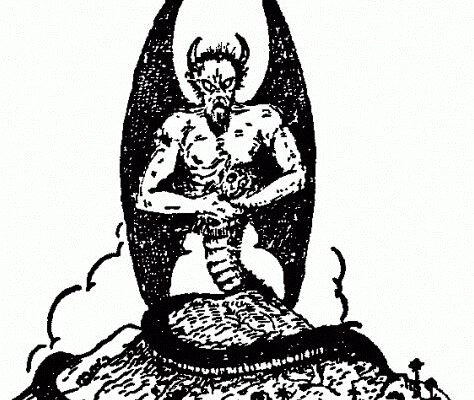
The Buziraco. Credits: Sercolombiano.com
Juanchito's Devil
Prone to tempting and being tempted, the devil did not resist the chance to have fun at Juanchito, once a reference of big party in our city. Urban legend or not, they say that a very handsome fellow, dressed to the nines, appeared in Changó, a very famous place at the time. Men and women could not stop looking at him because of his grace and ease when dancing, showing that he was the best dancer of the night. Many ladies longed to shake a leg with the mysterious guy, but only one was chosen as a dance partner to spend the night with him to the sound of salsa brava. At the climax of the pachanga, this gentleman whispers to his beautiful companion not to look at his feet. She ignores him and then gets terrified by noticing he had goat legs and a strong sulfur smell! The dance floor suddenly lit up, and the fire scared everyone out of the nightclub... Some say that the devil kissed her burning her lips and neck before he disappeared others that she fainted and died on the spot; and there are versions asserting that a couple of brave men managed to rescue her from the blaze, despite she never recovered from what happened and had to be confined in an asylum. So, this is one of those great rumors of our city, perfect to set ourselves within the All Hallows' Eve in Cali.
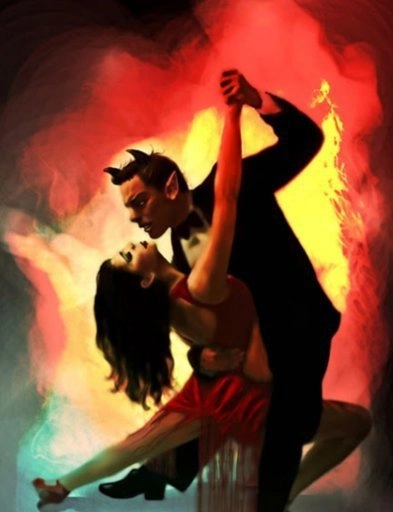
Juanchito's Devil. Credits: Historias-y-leyendas.blogspot.com
The Weeping Woman of San Antonio
Among those horror stories that nourish the repertoire of our macabre tourism in Cali, we find this one about a beautiful gypsy woman who worked as a maid in the mansion of a high-ranking family in the San Antonio neighborhood. This young servant attracts the attention of an aristocratic guest of her masters, who becomes obsessed with her despite being married, to whom she reciprocates in the successive visits that the lover practices (an issue ignored by the owners of the house). This gentleman's wife discovers his infidelity. And vindictively not only humiliates and accuses him of adultery to the archbishop but also points out the girl's employers as pimps… The news did not sit well with the manor's lord, who ultimately killed the lover of his employee out of this offense, causing her to take her own life in one of the rooms of his home. Later on, her spirit torments the inhabitants of this residence with her wailing. We share this cartoon that tells another similar version creatively illustrated.
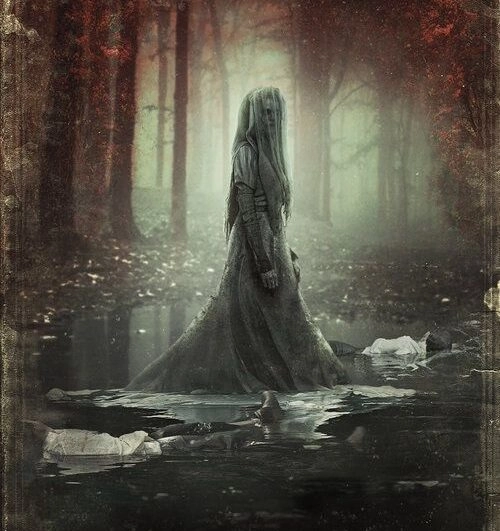
The Weeping Woman of San Antonio. Credits: Elespectadorimaginario.com
The Tunda
Terrifying entity of our Colombian Pacific, it is part of the great myths and legends of Valle del Cauca, with some circulating varieties in the port of Buenaventura. It is about a grotesque and stinking woman with one foot in the shape of a pinwheel and the other as a baby's. She kidnaps disobedient children, unbaptized newborns, revellers and unfaithful husbands, posing as a loved one so that they follow her to the mountain. Once there, she stupefies her victims by making them eat shrimp and crabs cooked in her fetid entrails, turning them into her lovers with degrading sexual practices. It is one of the most picturesque folkloric pieces (you can read it in full at this link), with equivalents to other allegories that you will also hear in our region, like the much-feared One-legged Woman of the open lands, or the Merry Widow in our city contexts.
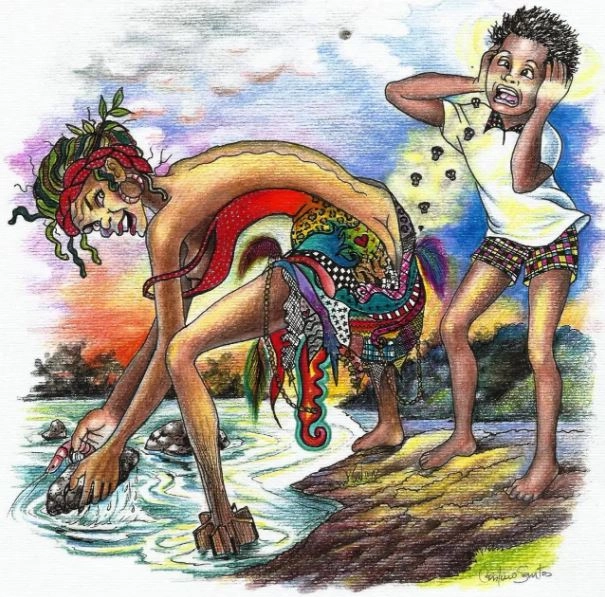
The Tunda. Credits: C. Santos at Talenthouse.com
The Gnome
As a widely spread belief in America, dwarfs are also part of Colombia's collective imagination at the Pacific and southwestern regions. Portrayed as small fantastic creatures related to houses, forests, and bodies of water, they also belong to the underground world and outdoor spaces: whether rural or urban. As beings of dual nature, playful or evil: they can harmlessly play the treble guitar (or the flute) leaning against a tree or drive people crazy with their wickedness by moving objects from place, dirtying houses, tormenting women, annoy animals, abduct children and much more… For all these reasons, there are those who even avoid going through our city viaducts, it is believed that these goblins gather at tunnels waiting for people to fall prey to their pranks, just like it happens with the Elf of the Bridge.
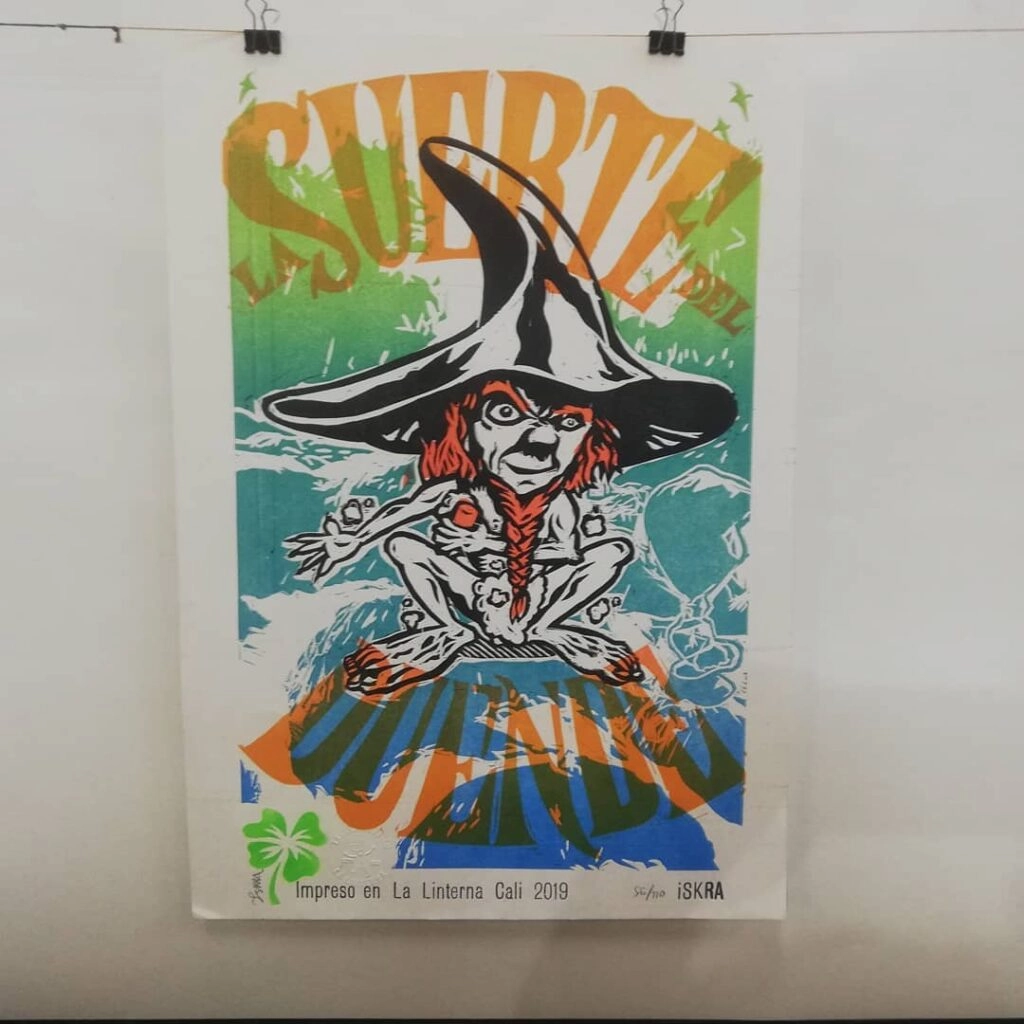
The Gnome. Credits: Taller Litográfico La Linterna
The Evil Chicken
Also known as the Bald Bird. It is about a chick possessed by a demonic energy, product of the exorcism that a priest performed on a girl. It is said that at the time of this practice, the evil spirit left the girl's body and took refuge in the offspring of a hen that was close to the scene of the ritual. A deformed monstrosity with bulging and sparkling eyes, bat wings, a snake's neck, an enormous beak and rooster's feet, it is a source of fear for those who hear it chirping, especially in the Pance and the Aqueduct Park.
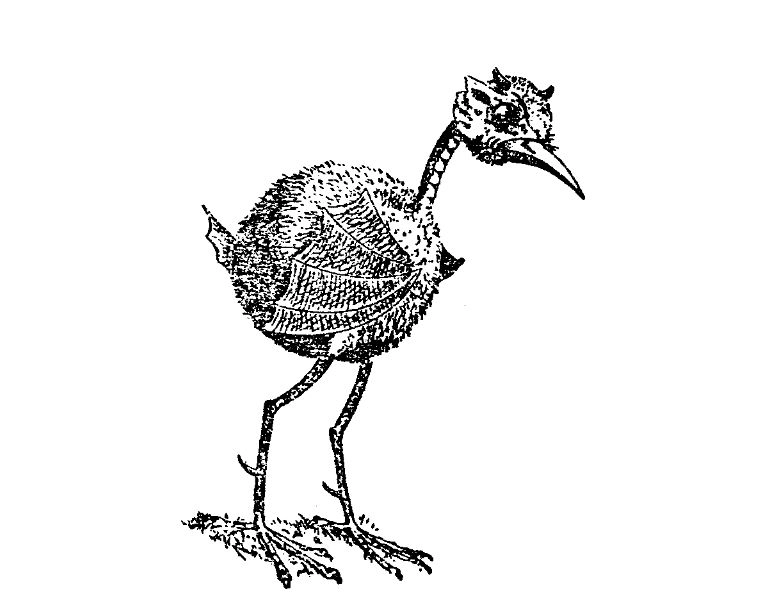
The Evil Chicken. Credits: Orquideasandleyendas.blogspot.com
The Will-o'-the-wisp
Story inherited and shared with other regions, the Will-o'-the-wisp (or Candileja) is one of those myths and legends of Cali also known as the Fire Ball, which is basically a soul in pain... Similar to the Lonely Soul in its depiction, it is the the wandering spirit of a lady engulfed in flames, serving time for having killed a loved one in a fit of rage. Depending on the version, the woman murders her husband out of jealousy; or slays her children in revenge, feeling rejected by her spouse. Despite many other adaptations, popular mythology states that her ghost wanders the roads as a punishment from God, or that she throws herself into the fire after realizing her crime. And since she is not forgiven, her appearances scare those who see her, or make people lose their way.
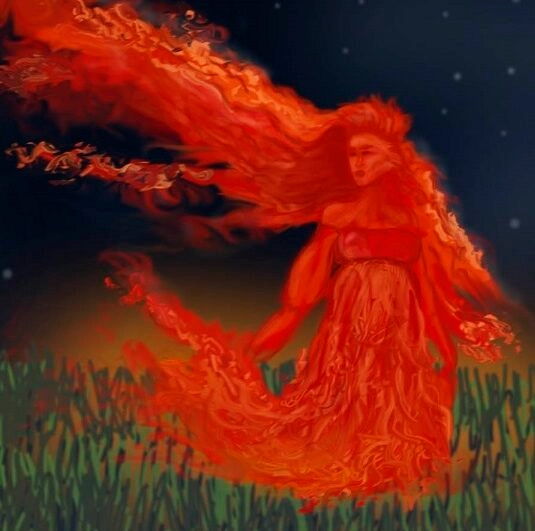
The Will-o'-the-wisp or 'Candileja'. Credits: Elrinconcolombiano.com
The Black Slave's Hand
Also known as the Hairy Hand, the myth has some macro variants involving a black slave in the whereabouts of Loma de la Cruz, a popular destination of noir tourism in Cali. The first version recounts that this servant rebelled against his owner, a Spaniard, after being beaten and unjustly accused of stealing some coins... The following states that this same bondsman was very rude and used to hit his mother... And the third account tells this young African fell in love with the daughter of his boss and vice-versa (or that he yearned for the favorite slave of his masters)… Except for the first and third variety of the story that says the poor mulatto was slaughtered or buried alive in punishment for his audacity (with his hand rising from the ground to predict his revenge), only the second adaptation is slightly different and involves the curse his mother cast on him, calling the earth to be opened at his feet and swallow her abusive son in punishment. After which, devoured by the ground, the black raises his furred hand to the surface, clenching his fingers and crossing them in the shape of a cross before he dies.
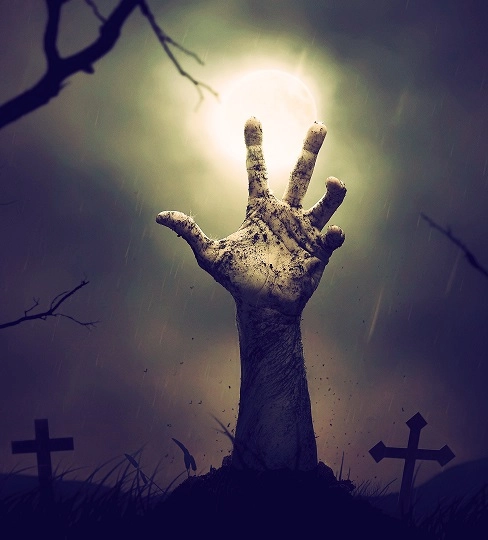
The Black Slave's Hand. Credits: Wallpapersden.com
The Man in the Hat
Oral tradition of Cali also knows him as the Black Rider, a horrifying vision of drunks, swingers, gamblers, and misbehaving men who roam the sidewalks at night. It is a shady individual seated on a dark horse in the gloom, elegantly dressed in black, in a silent and watchful bearing, joined by two huge and intimidating dogs. His most noticeable feature is a wide-brimmed hat over his head, showing a skull face when provoked by offense or imprudence of those who see it. His corpulent, tall and enigmatic figure, coupled with his vigilante character, makes him one of the most feared and respected spirits of our Colombian folklore.
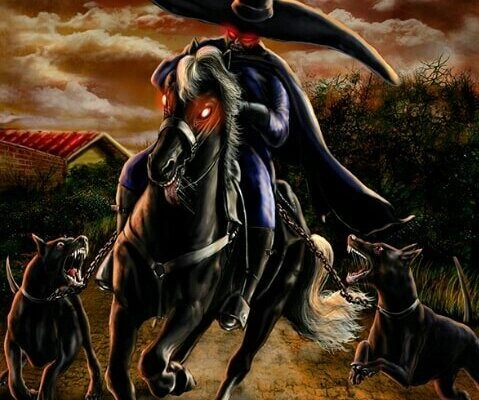
The Man in the Hat. Credits: Portal-dos-mitos.blogspot.com
The Mohan
Of those horrors of Valle del Cauca actually getting our sympathy, we have to mention The Mohan, an entity of indigenous cosmology that, as a protector of nature, is somewhat twinned with the Mojana, the Madremonte, the Water Indian, the Hojarasquín del Monte and the Water Mother. Manly divinity of the riverbeds and mountainous jungles, he usually abducts young women who wash clothes or bathe in the rivers, falling in love with them. He also likes to play jokes on fishermen by entangling their nets, losing their hooks, or turning their canoes over... However, he is ruthless with those who destroy the environment. That said, his playful character vanishes as soon as someone invades, pollutes or damages his domains, displaying his power and cannibalistic quality. He is a sun-baked hairy giant with robust complexion, long bushy hair covered in moss, large mouth, red eyes, and a tobacco smoker. There is a magnificent image of this deity at the Bichacue Yath Natural Reserve, a place you should definitely visit to hear from artist Tomás Muñoz and his wife, Nubia Gómez, why it is good not to challenge this divine being.
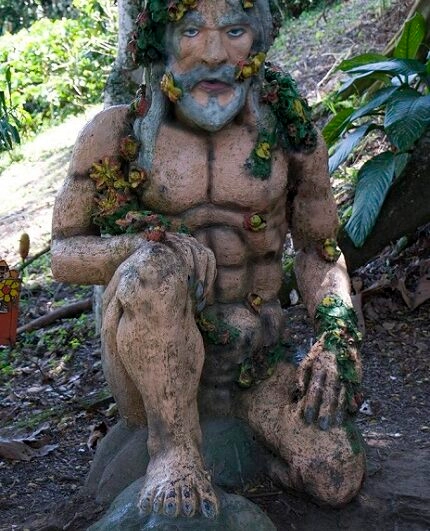
The Mohan. Credits: Historia de Colombia (@colombia_hist)
The Wasteland Monster
Based on a gruesome real-life case between 1963 and 1967 (with a ghastly copycat effect until the following decade), many say years ago a "vampire" sucked the blood of kidnapped children later found dead in parks and wastelands within Cali. Times were hard, and our Police never managed to discover the serial killer dbehind these atrocities. Out of fear, people began spreading gossips as unbased theories were heard. From pointing a well-known leukemia-stricken businessman, as the intellectual author of these crimes for blood transfusions (a version that curiously turned him into a miracle-working martyr with dozens of weekly visits to his grave in the Central Cemetery of our city today). To even talking about satanic groups responsible for these murders that could never be apprehended. In any case, this perverse story has remained a frightening memory of our recent past, and it has paradoxically become the motive of a necrologic attraction that captivates many curious and devoted people to this destination of funerary tourism in Cali.
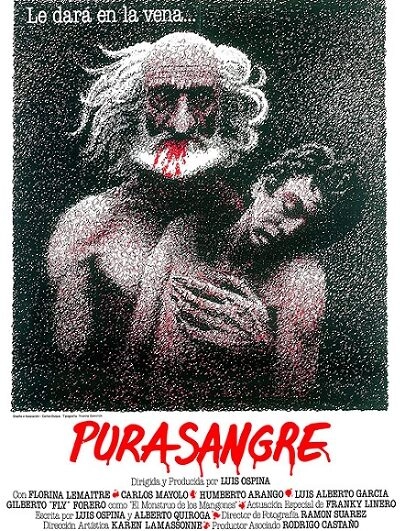
The Wasteland Monster. Credits: Imdb.com
But just like these, there are dozens of creepy chronicles that are still located in our capital of Valle del Cauca or its surroundings, such as the Girl of Miracles, the Crying Baby, the Lady in White, Juan Machete, the Mysterious Ball, the Ghost of Pichinde, the Girl with the Letter, etc.
If you want to hear more, online storytellers like Howard Gutierrez will gladly recite many other local tales that won't make you go to bed (or if you are so morbid, maybe it will push you to doing some thana tourism in Cali).
Either way, we hope these stories of Halloween in Colombia have "entertained" you for the time being.
Sleep tight!
---
Hoteles Spiwak: your best accommodation option in Cali and the third largest hotel complex in Colombia. Located north of the city, with easy access to the Alfonso Bonilla Aragón International Airport, in the luxurious Chipichape Shopping Center. 462 rooms, two swimming pools, a gym, and access to all basic and entertainment services you require: banking area, supermarket, drugstores, shops, cinema, casino and much more.
Our spectacular La Zarzuela restaurant offers a menu specialized in fusion cuisine, with ingredients from the Colombian Pacific and Mediterranean techniques. The perfect spot to taste the most innovative international cuisine in Cali.
Whether on a farm, in a camping tent, or in our homes after asking for candies from door to door, have we ever heard these legends that are part of our Colombian folklore, several of them originating in our town.
We remember our ancestors with these tales that our grandparents heard and told us (also scared us!) on a day of ghouls, witches and jack-o’-lanterns like this October 31.
Let's see how many of these myths of our Colombian oral tradition you know, or if you dare: why not? Maybe it will make you consider doing a bit of black tourism in Cali with the following noir guide to Valle del Cauca:
The Buziraco
Because Halloween night in Cali gets much more spectral when this story is heard at the Branch of Heaven itself. That said, you can start by looking at the Cerro de las Tres Cruces right from our hotel. This was the place chosen by Buziraco (the devil) to live after being expelled from Cartagena: the peak from where he used to send all kinds of pests and torments to our city... Sitting on the top of this hill, with bat wings and gloomy laughter, this demon could be seen especially on stormy nights. Until two friars decided to put an end to his perversity by installing three bamboo crosses at the top of this elevation, later replaced by stronger ones made of concrete and steel to lock him in the mountain forever. You can read more about this story here.

The Buziraco. Credits: Sercolombiano.com
Juanchito's Devil
Prone to tempting and being tempted, the devil did not resist the chance to have fun at Juanchito, once a reference of big party in our city. Urban legend or not, they say that a very handsome fellow, dressed to the nines, appeared in Changó, a very famous place at the time. Men and women could not stop looking at him because of his grace and ease when dancing, showing that he was the best dancer of the night. Many ladies longed to shake a leg with the mysterious guy, but only one was chosen as a dance partner to spend the night with him to the sound of salsa brava. At the climax of the pachanga, this gentleman whispers to his beautiful companion not to look at his feet. She ignores him and then gets terrified by noticing he had goat legs and a strong sulfur smell! The dance floor suddenly lit up, and the fire scared everyone out of the nightclub... Some say that the devil kissed her burning her lips and neck before he disappeared others that she fainted and died on the spot; and there are versions asserting that a couple of brave men managed to rescue her from the blaze, despite she never recovered from what happened and had to be confined in an asylum. So, this is one of those great rumors of our city, perfect to set ourselves within the All Hallows' Eve in Cali.

Juanchito's Devil. Credits: Historias-y-leyendas.blogspot.com
The Weeping Woman of San Antonio
Among those horror stories that nourish the repertoire of our macabre tourism in Cali, we find this one about a beautiful gypsy woman who worked as a maid in the mansion of a high-ranking family in the San Antonio neighborhood. This young servant attracts the attention of an aristocratic guest of her masters, who becomes obsessed with her despite being married, to whom she reciprocates in the successive visits that the lover practices (an issue ignored by the owners of the house). This gentleman's wife discovers his infidelity. And vindictively not only humiliates and accuses him of adultery to the archbishop but also points out the girl's employers as pimps… The news did not sit well with the manor's lord, who ultimately killed the lover of his employee out of this offense, causing her to take her own life in one of the rooms of his home. Later on, her spirit torments the inhabitants of this residence with her wailing. We share this cartoon that tells another similar version creatively illustrated.

The Weeping Woman of San Antonio. Credits: Elespectadorimaginario.com
The Tunda
Terrifying entity of our Colombian Pacific, it is part of the great myths and legends of Valle del Cauca, with some circulating varieties in the port of Buenaventura. It is about a grotesque and stinking woman with one foot in the shape of a pinwheel and the other as a baby's. She kidnaps disobedient children, unbaptized newborns, revellers and unfaithful husbands, posing as a loved one so that they follow her to the mountain. Once there, she stupefies her victims by making them eat shrimp and crabs cooked in her fetid entrails, turning them into her lovers with degrading sexual practices. It is one of the most picturesque folkloric pieces (you can read it in full at this link), with equivalents to other allegories that you will also hear in our region, like the much-feared One-legged Woman of the open lands, or the Merry Widow in our city contexts.

The Tunda. Credits: C. Santos at Talenthouse.com
The Gnome
As a widely spread belief in America, dwarfs are also part of Colombia's collective imagination at the Pacific and southwestern regions. Portrayed as small fantastic creatures related to houses, forests, and bodies of water, they also belong to the underground world and outdoor spaces: whether rural or urban. As beings of dual nature, playful or evil: they can harmlessly play the treble guitar (or the flute) leaning against a tree or drive people crazy with their wickedness by moving objects from place, dirtying houses, tormenting women, annoy animals, abduct children and much more… For all these reasons, there are those who even avoid going through our city viaducts, it is believed that these goblins gather at tunnels waiting for people to fall prey to their pranks, just like it happens with the Elf of the Bridge.

The Gnome. Credits: Taller Litográfico La Linterna
The Evil Chicken
Also known as the Bald Bird. It is about a chick possessed by a demonic energy, product of the exorcism that a priest performed on a girl. It is said that at the time of this practice, the evil spirit left the girl's body and took refuge in the offspring of a hen that was close to the scene of the ritual. A deformed monstrosity with bulging and sparkling eyes, bat wings, a snake's neck, an enormous beak and rooster's feet, it is a source of fear for those who hear it chirping, especially in the Pance and the Aqueduct Park.

The Evil Chicken. Credits: Orquideasandleyendas.blogspot.com
The Will-o'-the-wisp
Story inherited and shared with other regions, the Will-o'-the-wisp (or Candileja) is one of those myths and legends of Cali also known as the Fire Ball, which is basically a soul in pain... Similar to the Lonely Soul in its depiction, it is the the wandering spirit of a lady engulfed in flames, serving time for having killed a loved one in a fit of rage. Depending on the version, the woman murders her husband out of jealousy; or slays her children in revenge, feeling rejected by her spouse. Despite many other adaptations, popular mythology states that her ghost wanders the roads as a punishment from God, or that she throws herself into the fire after realizing her crime. And since she is not forgiven, her appearances scare those who see her, or make people lose their way.

The Will-o'-the-wisp or 'Candileja'. Credits: Elrinconcolombiano.com
The Black Slave's Hand
Also known as the Hairy Hand, the myth has some macro variants involving a black slave in the whereabouts of Loma de la Cruz, a popular destination of noir tourism in Cali. The first version recounts that this servant rebelled against his owner, a Spaniard, after being beaten and unjustly accused of stealing some coins... The following states that this same bondsman was very rude and used to hit his mother... And the third account tells this young African fell in love with the daughter of his boss and vice-versa (or that he yearned for the favorite slave of his masters)… Except for the first and third variety of the story that says the poor mulatto was slaughtered or buried alive in punishment for his audacity (with his hand rising from the ground to predict his revenge), only the second adaptation is slightly different and involves the curse his mother cast on him, calling the earth to be opened at his feet and swallow her abusive son in punishment. After which, devoured by the ground, the black raises his furred hand to the surface, clenching his fingers and crossing them in the shape of a cross before he dies.

The Black Slave's Hand. Credits: Wallpapersden.com
The Man in the Hat
Oral tradition of Cali also knows him as the Black Rider, a horrifying vision of drunks, swingers, gamblers, and misbehaving men who roam the sidewalks at night. It is a shady individual seated on a dark horse in the gloom, elegantly dressed in black, in a silent and watchful bearing, joined by two huge and intimidating dogs. His most noticeable feature is a wide-brimmed hat over his head, showing a skull face when provoked by offense or imprudence of those who see it. His corpulent, tall and enigmatic figure, coupled with his vigilante character, makes him one of the most feared and respected spirits of our Colombian folklore.

The Man in the Hat. Credits: Portal-dos-mitos.blogspot.com
The Mohan
Of those horrors of Valle del Cauca actually getting our sympathy, we have to mention The Mohan, an entity of indigenous cosmology that, as a protector of nature, is somewhat twinned with the Mojana, the Madremonte, the Water Indian, the Hojarasquín del Monte and the Water Mother. Manly divinity of the riverbeds and mountainous jungles, he usually abducts young women who wash clothes or bathe in the rivers, falling in love with them. He also likes to play jokes on fishermen by entangling their nets, losing their hooks, or turning their canoes over... However, he is ruthless with those who destroy the environment. That said, his playful character vanishes as soon as someone invades, pollutes or damages his domains, displaying his power and cannibalistic quality. He is a sun-baked hairy giant with robust complexion, long bushy hair covered in moss, large mouth, red eyes, and a tobacco smoker. There is a magnificent image of this deity at the Bichacue Yath Natural Reserve, a place you should definitely visit to hear from artist Tomás Muñoz and his wife, Nubia Gómez, why it is good not to challenge this divine being.

The Mohan. Credits: Historia de Colombia (@colombia_hist)
The Wasteland Monster
Based on a gruesome real-life case between 1963 and 1967 (with a ghastly copycat effect until the following decade), many say years ago a "vampire" sucked the blood of kidnapped children later found dead in parks and wastelands within Cali. Times were hard, and our Police never managed to discover the serial killer dbehind these atrocities. Out of fear, people began spreading gossips as unbased theories were heard. From pointing a well-known leukemia-stricken businessman, as the intellectual author of these crimes for blood transfusions (a version that curiously turned him into a miracle-working martyr with dozens of weekly visits to his grave in the Central Cemetery of our city today). To even talking about satanic groups responsible for these murders that could never be apprehended. In any case, this perverse story has remained a frightening memory of our recent past, and it has paradoxically become the motive of a necrologic attraction that captivates many curious and devoted people to this destination of funerary tourism in Cali.

The Wasteland Monster. Credits: Imdb.com
But just like these, there are dozens of creepy chronicles that are still located in our capital of Valle del Cauca or its surroundings, such as the Girl of Miracles, the Crying Baby, the Lady in White, Juan Machete, the Mysterious Ball, the Ghost of Pichinde, the Girl with the Letter, etc.
If you want to hear more, online storytellers like Howard Gutierrez will gladly recite many other local tales that won't make you go to bed (or if you are so morbid, maybe it will push you to doing some thana tourism in Cali).
Either way, we hope these stories of Halloween in Colombia have "entertained" you for the time being.
Sleep tight!
---
Hoteles Spiwak: your best accommodation option in Cali and the third largest hotel complex in Colombia. Located north of the city, with easy access to the Alfonso Bonilla Aragón International Airport, in the luxurious Chipichape Shopping Center. 462 rooms, two swimming pools, a gym, and access to all basic and entertainment services you require: banking area, supermarket, drugstores, shops, cinema, casino and much more.
Our spectacular La Zarzuela restaurant offers a menu specialized in fusion cuisine, with ingredients from the Colombian Pacific and Mediterranean techniques. The perfect spot to taste the most innovative international cuisine in Cali.
*** By Tzeitel Topel ***

